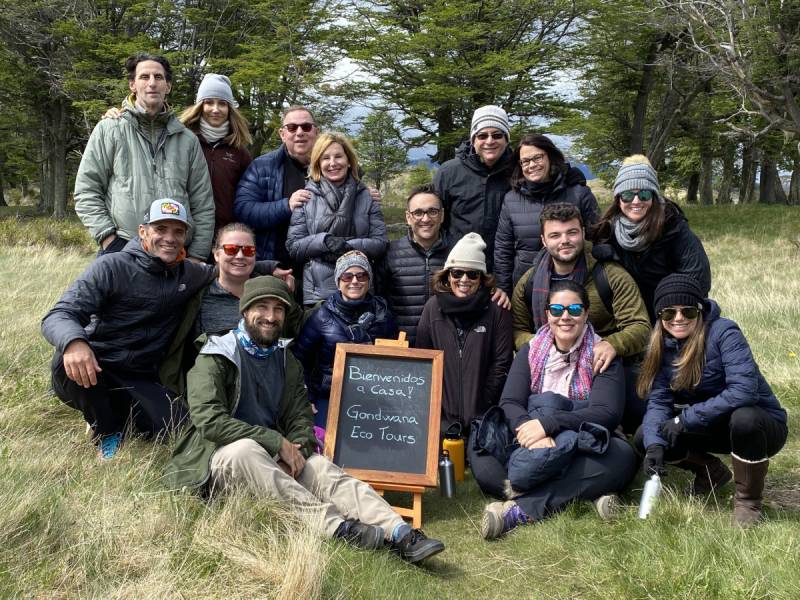Discovering the Gauchos of Argentina
Download Travel Details >PRIVATE & SMALL GROUP TOURS TO THE WORLD'S BEST DESTINATIONS
Join Us In Argentina!

Cowboy Culture and the Pampas
Few characters have such a prominent place in Argentine folklore as the gauchos. These rugged, nomadic men are the equivalent of America’s cowboy–expert horsemen who shunned the big city for a simpler existence on the windswept Pampas. From their early beginnings, gauchos were historic outlaws. Today, however, the cowboy culture of Argentina is alive and well, on estancias that tourists can visit for an authentic gaucho experience.
The Evolution of Argentina’s Gauchos
Gauchos flourished in the Argentine Pampas from the mid-18th to the mid-19th century. These skilled horsemen roamed the vast Pampas, herding cattle and living a life of freedom and independence. Because they lived outside the boundaries of society, gauchos became iconic figures in Argentine folklore, embodying freedom, resilience, and a deep connection to the land.
- Gauchos evolved as skilled horsemen in Argentina and Uruguay’s Pampas region, where they worked as cattle herders for local ranchers.
- The cowboy culture of the gauchos combines practical survival skills with artistic expression.
- Traditional practices include cattle herding, folk music, and open-fire cooking.
- The natural evolution of history transformed the gaucho into a cultural symbol within Argentine folklore.
- Today, festivals and other cultural celebrations celebrate the core values of the gaucho lifestyle while showing how it has adapted to modern times.
A Look at Gauchos Through History
Cowboy culture first began to emerge in Argentina during the country’s War of Independence. As Argentina’s patriot forces fought to break free from Spanish rule, they often found themselves outnumbered in rural areas. Local men of mixed Spanish and indigenous heritage joined the fight, serving as scouts and using their impeccable horseback riding skills to repel the Spaniards.
After Argentina gained its independence, the gauchos migrated to Argentina’s Pampas and found work herding cattle and doing odd jobs for the owners of wealthy estancias, or rural estates. Many different names evolved for the men who herded and hunted cattle on horseback: vaqueros, llaneros, charros, and, of course, gauchos. Traveling from estancia to estancia, these nomadic men became the stuff of legend–deeply ingrained in Argentine folklore and celebrated by Argentina’s writers and poets for centuries to come.
Cowboy Chic: Fashion Meets Practicality
Although gauchos embody the rebellious outlaw, living on the fringes of society, they were very stylish, in a rugged, outdoorsy way. The clothes they wore all had a practical purpose, but oftentimes, accessories showed a distinct, fashionable flair. Today, the former cowboy culture has invaded the runway, with gaucho fashion crossing over into mainstream life.
The gaucho wardrobe was extremely practical and included:
|
Hats |
Gauchos typically wore a boina, or beret, a tight-fitting hat that is designed to stay on in high winds and during fast-paced rides across uneven terrain. An Argentine sombrero is smaller than a traditional Mexican sombrero, but is still worn to protect gauchos from the sun. |
|
Scarf |
The scarf worn by the gauchos, called a pañuelo, is a colorful accessory that was designed for warmth and for show – a decorative accent to add flair to a working wardrobe. |
|
Shirt |
A gaucho’s shirt, or camisa, was often covered by a wool poncho for long rides in inclement weather. |
|
Pants |
Wide-legged pants, bombachas, are held up by a faja, an ornate woven belt wrapped multiple times around the gaucho’s lower stomach and hips. The faja also supports a gaucho’s hips while he is in the saddle. |
|
Shoes |
Gauchos typically wore apalgatas, canvas shoes with rope soles, rather than leather boots. |
|
Accessories |
Gauchos usually carried a rebenque, a whip with a thick handle, and a facón, a large knife used for everything from trimming their horses’ hooves to eating an asado. |
A New Beginning for Argentina’s Cowboy Culture
Towards the end of the 19th century, gaucho culture went into decline. Instead of celebrating gauchos, most Argentinians began to view them as uncivilized. The industrial revolution also changed the role of the gaucho, by reducing the need for rural labor and putting many out of a job. Today, however, gaucho culture is alive and well, thanks in large part to tourism. Not only does the gaucho have a place in Argentine folklore, but the modern gaucho is celebrated by international tourists who want the opportunity to stay at a working estancia and interact with real-life gauchos!
Many working estancias are located just a few hours’ drive from Buenos Aires, and they over a variety of day and weekend packages that allow tourists to interact with gauchos. These packages generally include:
- A traditional asado lunch or dinner with authentic Argentinian asado;
- Horseback riding lessons with a gaucho instructor; and
- Gauchos performing traditional cattle-herding skills passed down from generation to generation.
And, if you plan your trip to the Pampas in November, you can take part in the annual Fiesta de la Tradicion, which includes live rodeo shows, lassoing contests, parades, folk dancing, and outdoor grills piled high with traditional asado–a feast for the senses and the palate.
If you only have a limited window of time to discover this staple of Argentine folklore, museums like the Museo Gaucho y de las Payasadas (“Museum of Gauchos and Jokes”) in Buenos Aires house historical artifacts and exhibits that educate visitors about gaucho life and history. If you can’t visit an estancia, the museum is a close second!
Preserving Gaucho Culture for the Next Generation
Although today’s gauchos have adapted to the changing times, embracing tourism to survive, efforts are underway to safeguard cowboy culture in Argentina. For example, the “Fiesta Nacional de la Tradición Gaucha” in San Antonio de Areco, Argentina, attracts thousands of visitors each year and is the perfect showcase for traditional gaucho skills, music, and dance. Educational programs, like those offered by the Fundación Gauchos del Sur (“Foundation of Southern Gauchos”), work with Argentina’s schools to connect the younger generation with their cultural heritage through interactive workshops and educational materials.
The Lasting Impact of Gaucho Culture in Argentina
Cowboy culture in Argentina is more than just a memory of a series of tourist activities; it’s a journey into the heart of Argentina. When visitors engage with gauchos in Argentina, they gain a deeper appreciation of Argentine folklore and make memories that will last a lifetime. This experience, rich in tradition and authenticity, is a must for anyone seeking to truly understand and appreciate traditional ways of life during a visit to this amazing country.

